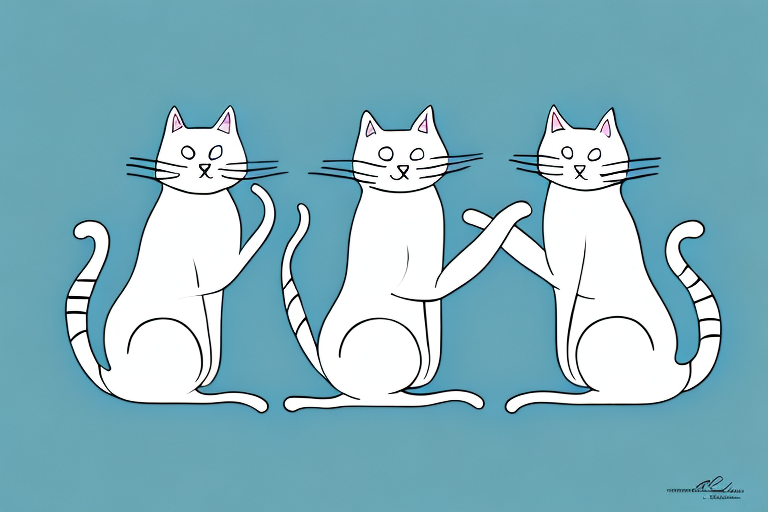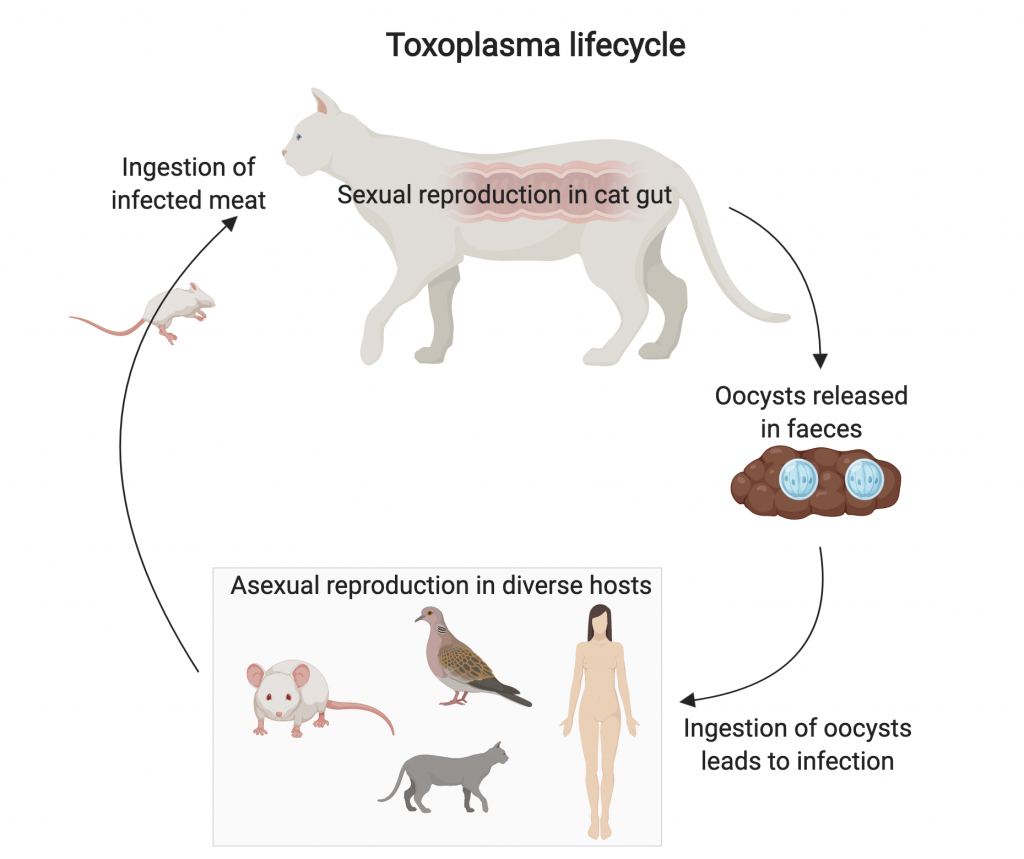Understanding how cats mate is essential for cat owners, enthusiasts, and those who are curious about feline reproduction. Cat mating is a fascinating process that covers various stages, behaviors, and physical interactions. It's intriguing to delve into the nuances of how cats reproduce, and knowing what happens behind the scenes can help us better care for our furry friends. In this section, we'll explore cat mating behaviors, the feline mating season, and how these factors play a significant role in the reproduction process.
The Anatomy of Reproductive Organs in Cats

To truly grasp the intricacies of cat reproduction, it's crucial to have a solid understanding of the anatomy involved in the process. Both male and female cats possess specific reproductive organs that play vital roles in mating and reproduction. Let's break it down:
Female Cat Anatomy
- Ovaries: These are small, almond-shaped organs where eggs (ova) are produced and stored. Female cats typically have two ovaries, which release ova during estrus (heat).
- Oviducts: These tube-like structures connect the ovaries to the uterus. They transport the ova, and fertilization usually occurs here if mating happens.
- Uterus: The uterus is a muscular organ where a fertilized egg implants and develops during pregnancy. It has two horns, allowing for multiple kittens to grow simultaneously.
- Vagina: This muscular tube connects the uterus to the external environment. It's where mating occurs, and it serves as the birth canal during delivery.
- Clitoris: Located at the ventral part of the vagina, the clitoris plays a role in sexual arousal and pleasure.
Male Cat Anatomy
- Testes: Male cats have two testes that produce sperm and hormones like testosterone. These organs are typically located in the scrotum.
- Epididymis: This is a coiled tube where sperm matures and is stored before ejaculation.
- Vas Deferens: This duct transports sperm from the epididymis to the urethra.
- Penis: The cat's penis is unique; it has spines that stimulate the female during mating, which can encourage ovulation.
- Accessory Glands: These glands produce fluids that nourish and transport sperm during ejaculation.
Understanding these anatomical components helps cat owners appreciate the complexities of feline reproduction and can assist in managing the health of their cats effectively.
The Mating Behavior of Cats

When it comes to the mating behavior of cats, it can be quite a fascinating—and often puzzling—experience for many cat owners. Unlike some other pets, cats have very specific mating rituals, and here's what you need to know!
Firstly, it's important to note that cats are typically solitary creatures. However, when it comes to reproduction, both male and female cats exhibit a range of behaviors influenced by their primal instincts.
Male Cats: Male cats, or toms, can sense when a female is in heat, thanks to their keen sense of smell. They may exhibit behaviors such as:
- Vocalization: Toms often yowl or howl to attract females. This can be quite loud and unmistakable!
- Mating Call: The distinctive sound that is thought to communicate readiness to mate.
- Restlessness: Increased activity and a tendency to roam may occur as they search for a mate.
Once they locate a female, they may engage in what’s known as a courtship dance. This involves sniffing, nudging, and gentle biting.
Female Cats: On the other hand, female cats, or queens, display certain behaviors during their heat cycle. These can include:
- Increased Affection: They may become more friendly and affectionate towards their owners.
- Posturing: Females often adopt a “lordosis” position, which is a signal of receptiveness.
- Vocalization: Similar to males, females also yowl loudly to attract attention.
In summary, the mating behavior of cats is a complex but interesting dance of instincts, showcasing the unique ways of these furry creatures!
The Reproductive Cycle of Female Cats
The reproductive cycle of female cats, also known as the estrous cycle, is a critical aspect of their biology that every cat owner should understand. This cycle consists of several phases that occur typically every few weeks, especially during the breeding season.
Let’s break it down into key phases:
| Phase | Duration | Characteristics |
|---|---|---|
| Proestrus | 1-2 days | Short period where the female may attract males but isn’t yet receptive. |
| Estrus | 3-14 days | Time when the female is fertile and receptive to mating; characterized by increased vocalization and affectionate behavior. |
| Metestrus (Diestrus) | Varies, up to 2 months if mated | If mating occurs, the female may enter a pregnancy phase; if not, she will return to proestrus. |
| Anestrus | Seasonal, varies | Resting phase where the cat does not cycle, usually during winter months. |
Understanding these phases is crucial for cat owners, especially if you are considering breeding or managing a female cat’s health. Keep an eye on signs of heat, as this could dictate your next steps—whether to allow mating or consult a veterinarian about spaying options.
In conclusion, the reproductive cycle of female cats is a fascinating process, governed by hormones and instincts, that plays a vital role in their lives.
The Role of Male Cats in Mating
When it comes to feline reproduction, male cats, or tomcats, play a crucial role in the mating process. Their behaviors and attributes are fascinating, often leading to some compelling dynamics during mating season.
Firstly, male cats are driven by instinct. They can sense when a female cat is in heat (estrus), which typically occurs every two to three weeks during the breeding season. How do they know? Well, female cats release a specific scent that attracts males. This pheromone scent acts like an irresistible beacon to tomcats, guiding them to the female who is ready to mate.
Social Behavior: Male cats are known for their unique social behavior. If several tomcats are in the vicinity of a female in heat, a bit of competition might ensue. This leads to various displays of dominance, such as:
- Vocalization: Males may yowl or make loud calls to boast their presence.
- Territorial Marking: They might mark their territory with urine to show dominance.
- Physical Confrontation: Sometimes, males may engage in fights to assert superiority over others.
Physical Attributes: Male cats possess unique physical traits that aid in reproduction. Their specialized reproductive anatomy includes barbed penises, which have tiny spines that play a role during copulation. This interesting evolutionary trait not only helps in sperm retention but also stimulates the female, prompting her to ovulate.
In summary, male cats are essential players in the reproduction game. Their unveiling of mating behaviors, territorial instincts, and physical adaptations make them fascinating creatures to study, especially when it comes to understanding how life continues in the feline world.
The Process of Cat Copulation
The process of cat copulation is a short yet fascinating event that takes place under specific circumstances. While it may happen quickly, several unique steps characterize the mating behavior between a male and a female cat.
1. Attraction: The mating process typically begins with signaling. When a female is in heat, she will exhibit behaviors like increased vocalization, rubbing against objects, and a more affectionate demeanor. This behavior attracts potential male mates who come to investigate.
2. Courting: Once a male approaches a receptive female, he may engage in a courtship ritual. This can include:
- Nuzzling: The male will often rub his head against the female, displaying affection and interest.
- Chasing: Playful pursuit might ensue as the male attempts to confirm her receptivity.
3. Mounting: If the female responds positively, the tomcat will mount her. This involves him grasping her neck with his teeth—this behavior mimics the grip of a mother cat when she carries her kittens. It’s essential for the mating ritual.
4. Copulation: The actual mating happens quickly. Once positioned, the tomcat inserts his barbed penis into the female's vagina. The barbs help stimulate her and induce ovulation, making it more likely for her to conceive. This process usually lasts only a few seconds to a minute.
5. Post-Copulation: After mating, the male often dismounts and may show signs of aggression, possibly as a result of the female's vocalizations or even a slight bite. Interestingly, female cats can mate with multiple males, leading to varied genetic mixes in their litters.
While it may seem abrupt and somewhat rough, the intricacies of cat copulation serve a significant purpose in ensuring the survival and health of future generations. It’s a process beautifully adapted to the needs of both the male and female cats.
7. Post-Mating Behavior and Pregnancy in Cats
Once a female cat, or queen, has mated with a male cat, the journey of reproduction doesn’t end there. Understanding what happens after mating is crucial for any cat owner. So, let’s dive into the fascinating world of post-mating behavior and pregnancy in cats!
After successful mating, the female cat exhibits distinct post-mating behaviors. These can include:
- Restlessness: Initially, a queen may seem restless and may even vocalize more than usual. This can be her way of expressing discomfort or confusion post-mating.
- Affectionate Behavior: Some queens may seek more affection and attention from their owners or companion animals, wanting to snuggle and show an increased need for social contact.
- Grooming: Cats are natural groomers, and post-mating, the queen may spend extra time licking herself. This ritual helps her feel clean and may also stimulate any residual hormonal responses.
Pregnancy in cats, or gestation, typically lasts about 63 to 65 days, although it can range from 58 to 70 days. During this time, a few key stages occur:
| Weeks | Developmental Changes |
|---|---|
| Weeks 1-3 | Fertilization occurs, and the embryos develop. By week three, the queen may exhibit signs of pregnancy, like a slight increase in appetite. |
| Weeks 4-5 | The cat’s abdomen begins to swell slightly, and she may start seeking out secluded areas to prepare for the kittens. |
| Weeks 6-9 | The kittens continue to grow and develop. The queen may exhibit more nesting behavior and prepare for delivery. |
It’s essential to provide the pregnant cat with a comfortable and safe environment, along with a nutritious diet to ensure the health of both the mother and her kittens. Understanding this process helps foster a nurturing environment for your feline friend during this significant life stage.
8. Conclusion
The reproduction process of cats is truly a captivating journey that highlights the wonders of nature. From the intricate mating rituals to the miraculous development of kittens, understanding this cycle can greatly enhance our appreciation for our feline companions.
In summary:
- Mating can be influenced by various external factors, such as the time of year and the presence of potential partners.
- Post-mating behaviors reflect the physical and emotional changes that queens experience.
- The pregnancy stage requires special attention and care to ensure the well-being of the mother and her future offspring.
So, if you’re a cat parent or planning to be one, remember to observe and support your queen through these stages with love and understanding. After all, being informed means being a better caregiver for our beloved furry friends! By embracing the beauty of their reproductive process, we can foster a deeper bond with our fabulous felines.










